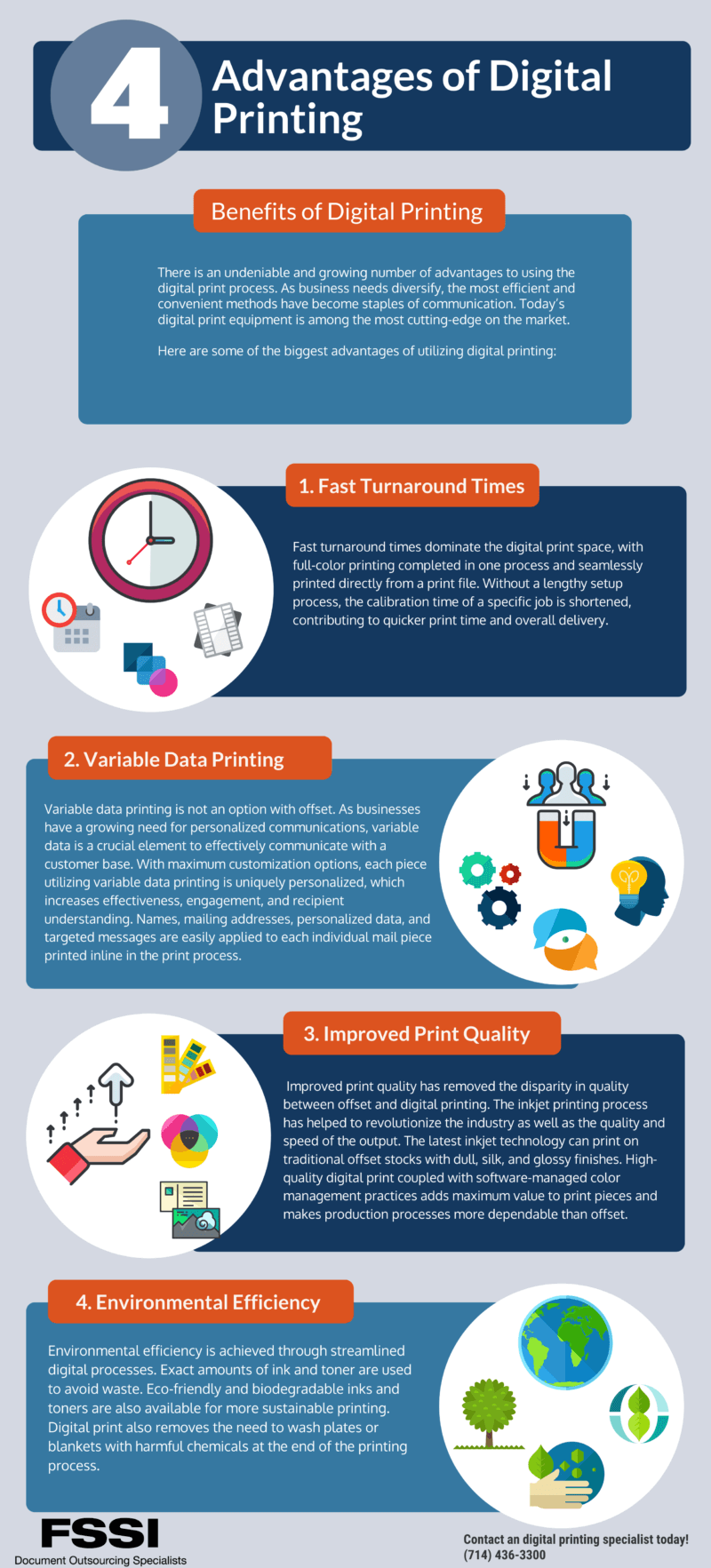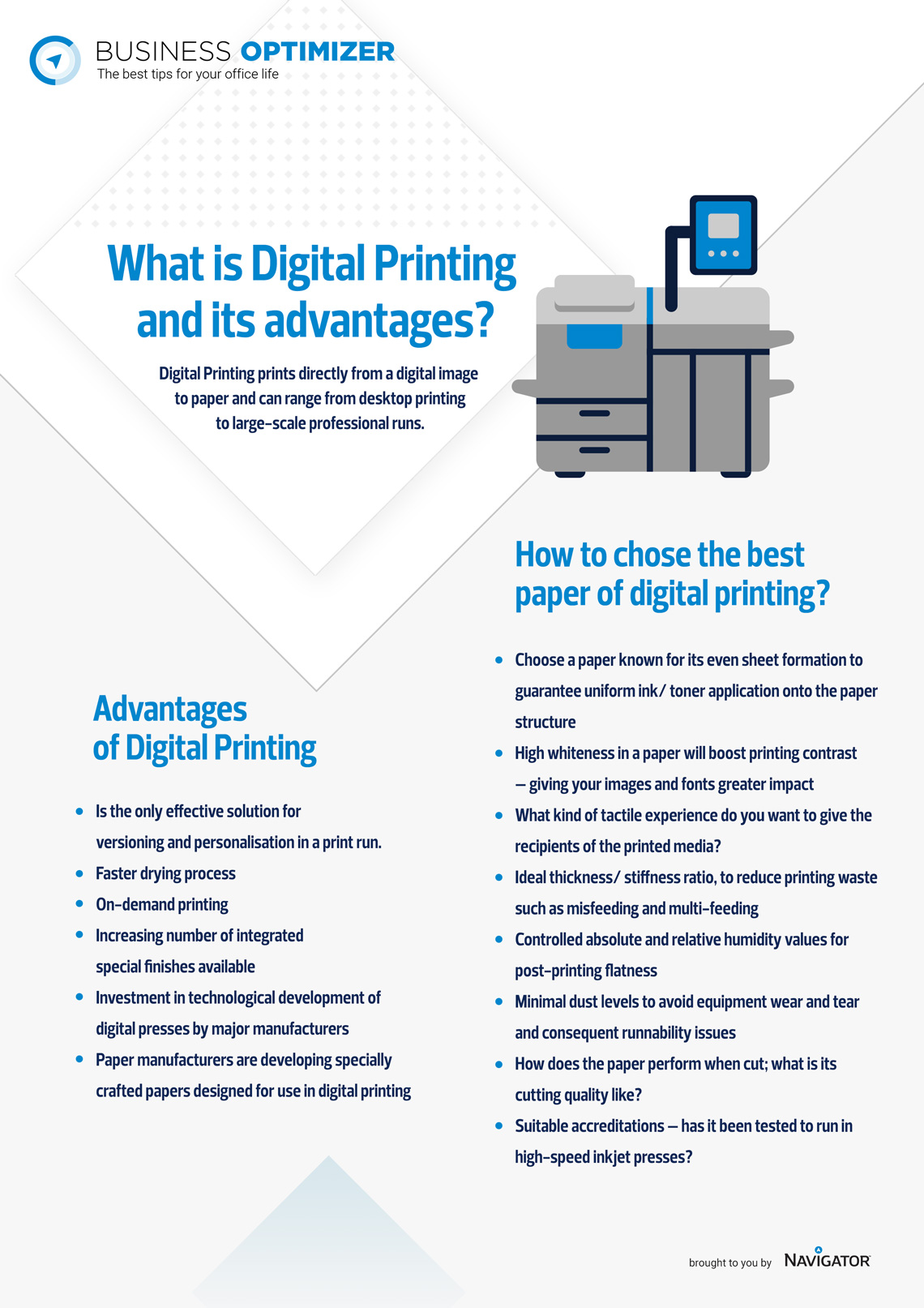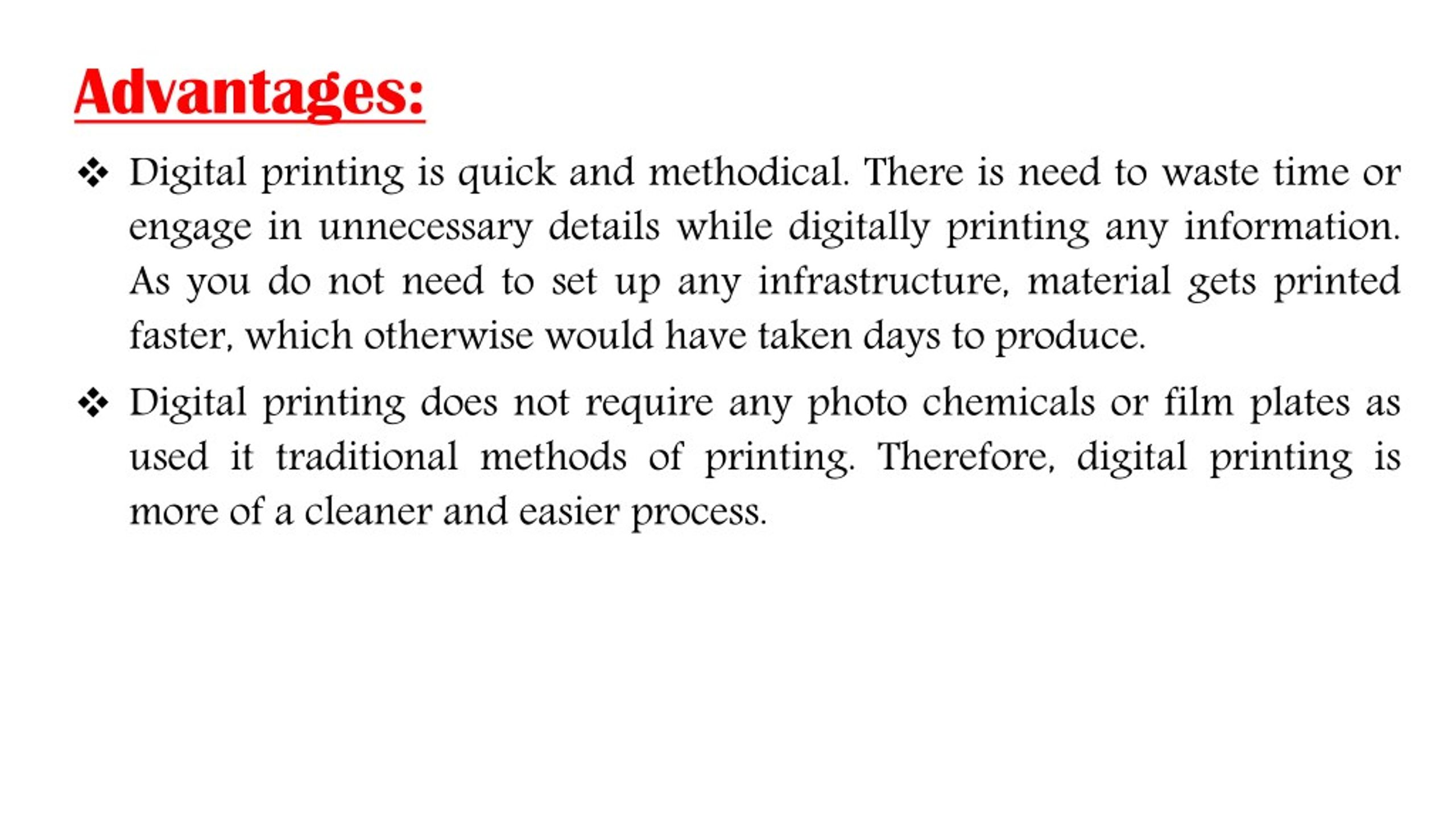The Digital Printing Ideas
The Digital Printing Ideas
Blog Article
All about Digital Printing
Table of ContentsNot known Facts About Digital PrintingExcitement About Digital Printing3 Simple Techniques For Digital PrintingExcitement About Digital PrintingDigital Printing Can Be Fun For AnyoneThe Ultimate Guide To Digital Printing
Variable data printing, such as straight mail with personalized codes and addresses, is preferably matched for digital printing. Digital fast printing just needs 4 steps of style, testimonial, printing and binding to get every little thing done. Digital quick printing has an exceptional benefit: print on demand.According to PMMI, electronic printing permits brands and makers to react rapidly to client needs while improving the supply chain, lowering warehousing cost and waste, and enjoying faster time to market. That all audios excellent, but just how does this technology do all that? The significant differentiator of these technologies is that there are no set up costs and no plates with digital printing.
Some Ideas on Digital Printing You Need To Know
According to Wikipedia, the greatest distinction in between electronic printing and standard techniques such as lithography, flexography, gravure, or letterpress - Digital Printing is that there is no requirement to replace printing plates in digital printing, whereas in these analog printing methods home plates are repeatedly replaced. This results in quicker turn-around time and decreases price when making use of electronic printing.
Fast manufacturing means getting your item to market faster. It also indicates it's less complicated and faster to make changes in the future, when you change a recipe, include a SKU, or create seasonal product packaging. Digital printing is highly versatile, so it's easy to make modifications to the plan design rapidly. It all returns to the plates.
With standard printing methods, short-run printing is just not feasible. Because an excellent design can make or break your item, electronic printing consistently produces high-grade, clear and colorful graphics each time.
Digital printing is the process of printing digital-based photos straight onto a variety of media substrates. There is no demand for a printing plate, unlike with countered printing. Digital files such as PDFs or desktop posting documents can be sent out straight to the digital printing press to print on paper, image paper, canvas, textile, synthetics, cardstock and various other substrates.
Unknown Facts About Digital Printing
According to PMMI, digital printing allows brand names and suppliers to respond swiftly to consumer needs while improving the supply chain, lowering warehousing cost and waste, and appreciating faster time to market. That all sounds fantastic, but exactly how does this innovation do all he has a good point that? The major differentiator of these technologies is that there are no set up costs and no plates with electronic printing.
According to Wikipedia, the best difference in between electronic printing and conventional methods such as lithography, flexography, gravure, or letterpress is that there is no need to change printing plates in digital printing, whereas in these analog printing approaches the plates are repetitively replaced. This causes quicker turn-around time and lowers cost when using electronic printing.

Unknown Facts About Digital Printing
With standard printing approaches, short-run printing is simply not possible. Since a wonderful design can make or break your product, electronic printing continually develops high-quality, clear and vivid graphics each time.

According to PMMI, electronic printing permits brands and manufacturers to react rapidly to client needs while improving the supply chain, lowering warehousing cost and waste, and appreciating faster time to market. That all sounds wonderful, but exactly how does this technology do all that? The major differentiator click for more of these innovations is that there are no set up fees and no plates with digital printing.
Not known Factual Statements About Digital Printing
According to Wikipedia, the best distinction between digital printing and typical techniques such as lithography, flexography, gravure, or letterpress is that there is no need to replace printing plates in electronic printing, whereas in these analog printing methods home plates are continuously changed. This results in quicker turn-around time and lowers price when making use of electronic printing.
Speedy production implies getting your item to market much faster. It additionally suggests it's easier and faster to make adjustments in the future, when you alter a recipe, add a SKU, or develop seasonal product packaging. Digital printing is extremely versatile, so it's easy to make changes to the package design quickly. It all returns to home plates.

Examine This Report on Digital Printing
Digital printing is the process of printing digital-based images straight onto a variety of media substratums. There is no requirement for a printing plate, unlike with balanced out printing. Digital documents such as PDFs or desktop computer posting documents can be sent out directly to the digital printing press to publish theoretically, image paper, canvas, textile, synthetics, cardstock and other substratums.
Report this page